In the town of Hanwell, located in the West London borough of Ealing where he grew up, metalworker/artist/luthier Pete Longfellow creates one-of-a-kind aluminum guitars out of his small workshop that’s a scant 200 yards from Jim Marshall’s (yes, that Jim Marshall) first shop. It’s the same borough where the Rolling Stones came together at the famed Ealing Club—one of the main hubs of British R&B—and where it was common and “no big deal” for the teen-aged Longfellow to sit with the likes of Keith Moon and Peter Townshend at local pubs. “Music was all around, and I watched it and bought it and have done it ever since,” says Longfellow.
Longfellow got his career started with a mechanical engineering apprenticeship as a toolmaker. He then went on to run a metalworking shop helping and instructing postgraduate, art and design students at the Royal College of Art in London, where he still is today. It’s in his home workshop where he works on guitars and other commissions. In fact, he first started building aluminum guitars simply because he wanted to have an instrument to play in his workshop when things were quiet, one that he could play without having to worry if it got “knocked.” And because Longfellow was already a fan of resonator guitars and their use of aluminum for the cones, it made perfect sense for him to “have a go at an all ‘ally’ guitar.”
Longfellow, who learned about guitar building from Jon Free of Black Guitars and legendary tech Stuart Monks, knew that past attempts at aluminum guitars had a reputation for easily going out of tune. But through his experience in working, welding, and sandcasting aluminum, Longfellow didn’t really feel that aluminum should have this affect, since he was aware that the metal has little chance of expansion or distorting, and that it shrinks less than one percent when going from molten to cold. “I knew of aluminum’s qualities of resonance, so I thought I’d better get at it,” he says.
Though his first attempt by using a cutdown aluminum pipe with a plate welded to it for a neck didn’t quite work out, Longfellow was encouraged by its looks. After some initial trial and error using cast aluminum for the necks of his first few instruments, he found that even with relieving the weight somewhat by machining the necks with CNC, he still couldn’t get the guitars to balance the way players are used to. Since then, he’s been mostly using wood for his necks.
Longfellow says that he doesn’t make two guitars the same and that his favorite is “always the last one I made.” He admits that it can sometimes be difficult trying to think of shapes beyond those from Fender, Gibson, and Gretsch, but that he does try to make his shapes more sympathetic to the material itself. “I am influenced by the great shape of the Gretsch lap steel,” says Longfellow. Be it something fashioned from one of the classics, a way out there design, or one of his new amp casings, Longfellow has found a way to craft a wide assortment of instruments from this highly resonant material.
The luthier prefers to make his own bridges and fittings as much as possible. Even though Longfellow doesn’t believe aluminum guitar makers will make an impact in the mainstream industry, he feels he has something uniquely different to offer. “My guitars have a good, strong sound with nice sustain. My customers like that and their look,” he notes.
The Scallop
The Scallop is the second instrument Longfellow
built and he has no plans to part with it. “Its
shape is just my version of a traditional semiacoustic
‘jazzer’,” says Longfellow. This early
model has a cast aluminum neck topped with a
rosewood fretboard, with a custom tailpiece designed
and built by the luthier. Outfitted with a trio
of vintage Hofner pickups he pulled from a guitar
found on eBay, Longfellow says that the Scallop
has a strong acoustic tone unplugged and really
delivers a vintage sound when amplified.
The Burner
The name for the Burner was inspired by the
name of the company that manufactured its
trio of pickups. Loaded up with Burns Tri-Sonic
single-coils, each has a dedicated volume pot
while the fourth control knob serves as a master
tone. The Burner’s maple neck is topped with a
rosewood fretboard, and the all-aluminum body
is sealed with a matte lacquer finish. For good
vibrato measure, Longfellow dressed the Burner
with a Bigsby B70.
Tuf
This design draws inspiration from a Charvel
Surfcaster and gets its name from the Tufnol
material used for the pickguard. Longfellow
says that most manufacturers don’t vary the
styles of control knobs and usually settle for
standard issue, so he decided to make his own
by casting resin knobs to match the visual style
of the guitar. In keeping with the aesthetics of a
Surfcaster for the electronics, the luthier loaded
up the Tuf with a pair of SLD-1 lipstick pickups
from Seymour Duncan.
T–Style
Longfellow has built many Tele-styles in his career,
but this one in particular has a maple neck
with rosewood fretboard, a Tufnol pickguard,
and a custom bridge made by Longfellow. The
aluminum twang machine is outfitted with Bare
Knuckle Blackguard series pickups in both the
neck and bridge positions.
S–Style
“You can’t improve on the classic shape of a
Strat, but I tried to put my own mark on it,” says
Longfellow. This version, which just recently
sold, has a cast-aluminum neck crowned with
a rosewood fretboard, and features special appointments
like the vintage-style, chicken-head
knobs and a bridge handcrafted by Longfellow.
This axe is loaded with a pair of Seymour
Duncan SHR-1 Hot Rails single-coils in the neck
and middle positions, and a Seymour Duncan
SH-PG1B Pearly Gates in the bridge.
Oyster Lap Steel
Longfellow is proud to say that he “ironically”
sold one of his previous lap steels to a player
in Honolulu, Hawaii. The Oyster model lap steel
shown—his most recent—sold via eBay to a
player in Germany who reports that he’s pleased
with its strong tone. Longfellow constructed the
fretboard from Tufnol, which was then inlaid with
aluminum wire and discs. For electronics, the
Oyster houses a single Gretsch Electromatic lap
steel single-coil located near the neck.
Pricing and Availability
Longfellow enjoys working with customers
for custom builds and encourages
them to choose and supply pickups and/or other parts. “This shows their commitment
to standards and keeps costs
down,” he says. The luthier prefers commissioned,
custom work and welcomes
inquiries through his website, but noncustom
builds can be found in some of
the guitar shops along London’s famed
Denmark Street, and occasionally on
eBay. Longfellow is equipped and set up
to build approximately 50 instruments
per year and the average turnaround time
for a custom build is about four weeks.
Base prices range from as little as $320
for a lap steel and up to $950 for a more
detailed build.



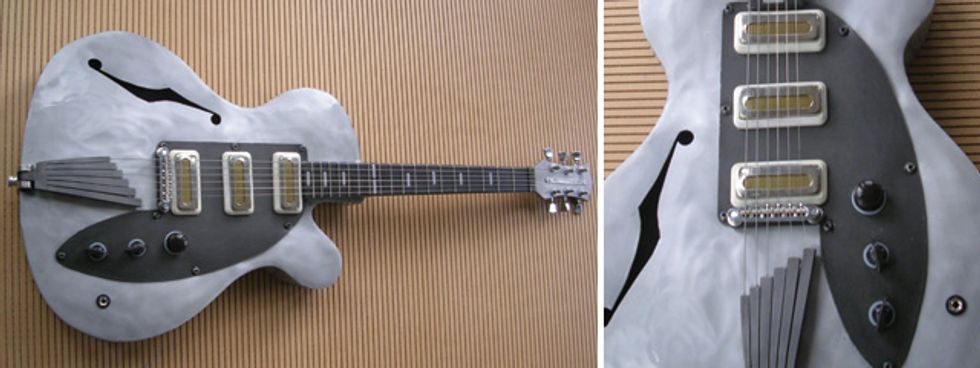
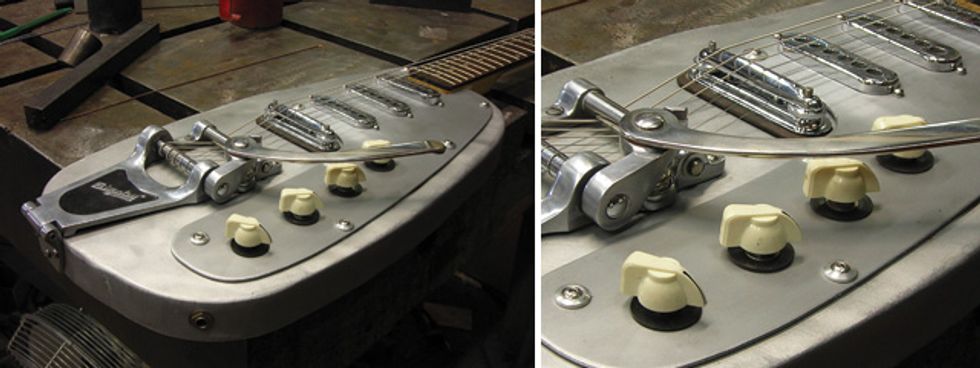
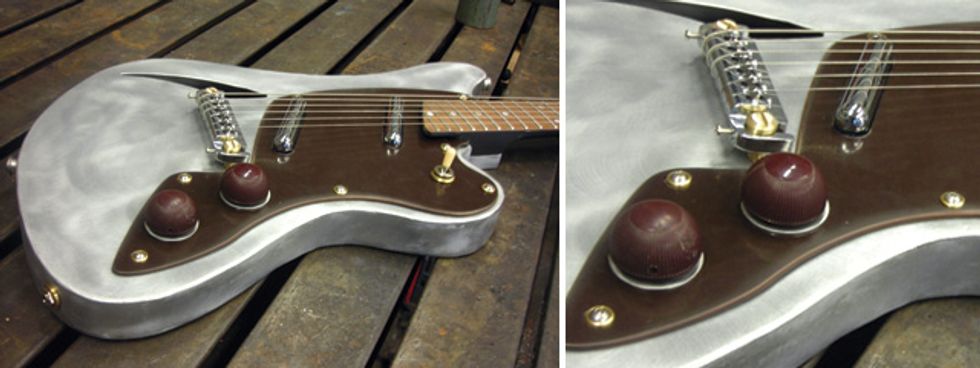
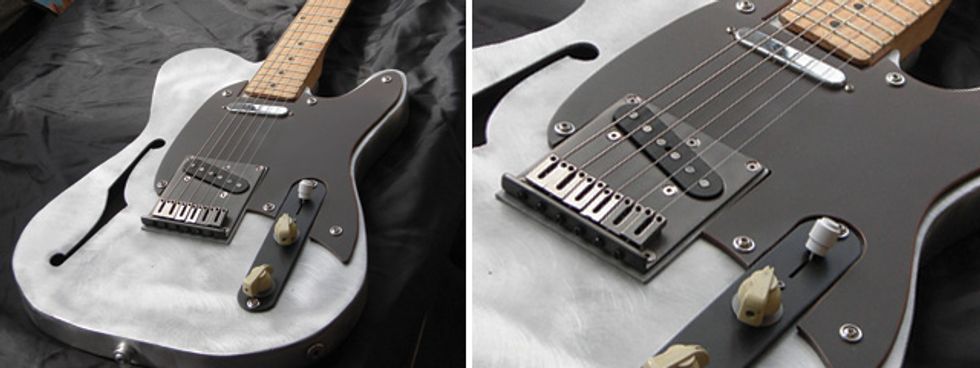
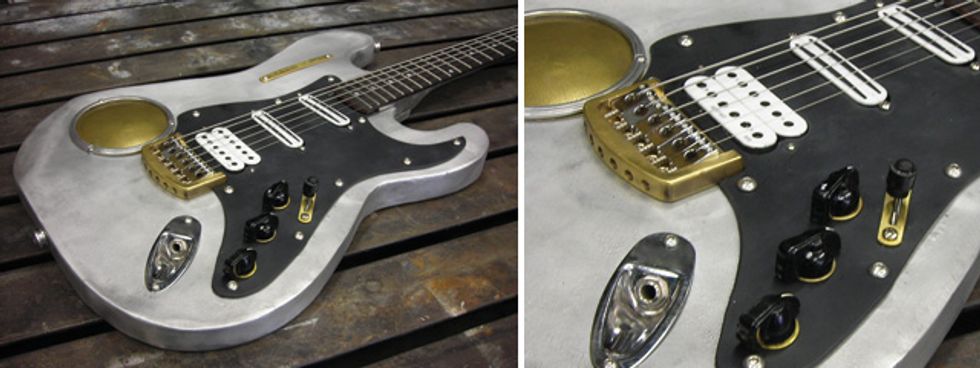
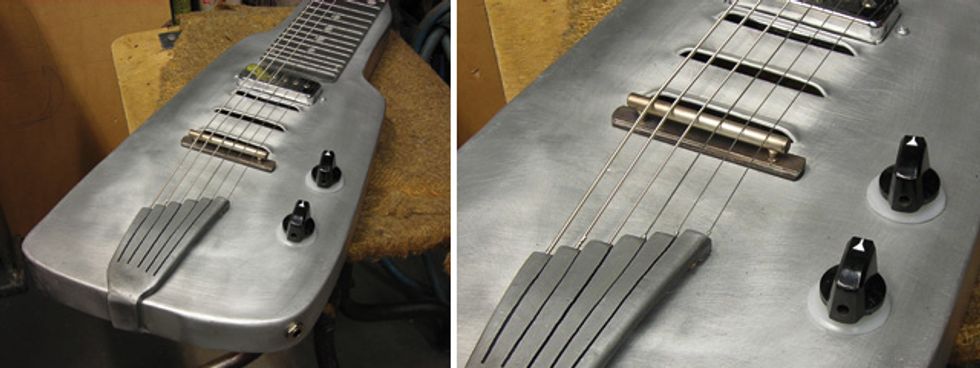




![Rig Rundown: Russian Circles’ Mike Sullivan [2025]](https://www.premierguitar.com/media-library/youtube.jpg?id=62303631&width=1245&height=700&quality=70&coordinates=0%2C0%2C0%2C0)

















